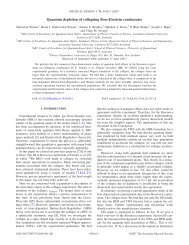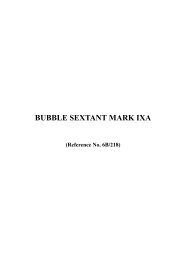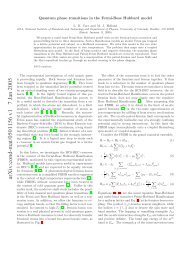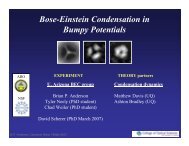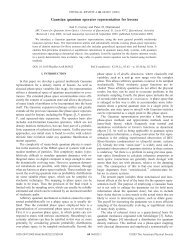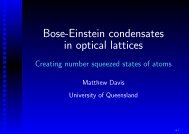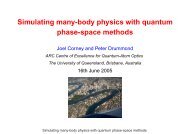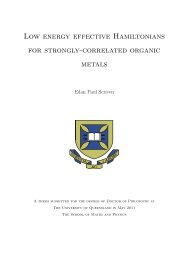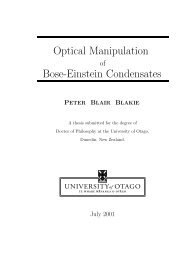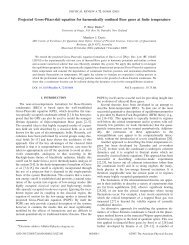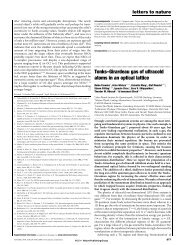Open Quantum Dynamics of Mesoscopic Bose-Einstein ... - Physics
Open Quantum Dynamics of Mesoscopic Bose-Einstein ... - Physics
Open Quantum Dynamics of Mesoscopic Bose-Einstein ... - Physics
You also want an ePaper? Increase the reach of your titles
YUMPU automatically turns print PDFs into web optimized ePapers that Google loves.
2. Properties <strong>of</strong> an atomic <strong>Bose</strong> condensate in a double-well potentialFigure 2.19: Conditional (continuous line) and unconditional (dashed line) evolution <strong>of</strong> a 100-atom condensate in a noisy double-well potential, in the absence <strong>of</strong> collisions. The unconditionalevolution is calculated from 100 trajectories. In (a), γ/Ω =10and in (b), γ/Ω = 100. The timeaxis has been scaled by t 0 =1/Ω.0.5(a)0.5(b)00conditionalunconditionalno noise−0.588 90 92 94 96 98 100t/t 0conditionalunconditional−0.50 20 40t/t 060 80 100(2.86)) and is due to the phase kicks in individual trajectories. In Fig. 2.19(b), the increasednoise (γ = 100Ω) partially suppresses at times the conditional oscillations, leadingto a faster decay <strong>of</strong> the unconditional dynamics.In a noise-free potential, the presence <strong>of</strong> atoms collisions induces a collapse in theoscillations, followed at sometime later by revivals. This happens on a faster time scalefor smaller numbers <strong>of</strong> atoms, as shown in Fig. 2.11. The collapses are due to the dephasingeffect <strong>of</strong> the nonlinearity, while the revivals come from the granularity <strong>of</strong> small quantumsystems, when all spectral components temporarily come back into phase. When a systemis coupled to the environment, the spectral components will decohere, thereby preventingrevivals.We see just this thing happening to the double condensates in a noisy potential. Figure2.20 shows that even when γ = 10Ω, the resultant decoherence accelerates the collapseand suppresses the revival that was seen in Fig. 2.11. For a weak noise source, as in Figs.2.20(a&b) where γ/Ω = 10, the suppression <strong>of</strong> revivals is only partial, but for a largernoise source, as in Figs. 2.20(c&d) where γ/Ω = 100, there is no hint <strong>of</strong> revivals.Even though the mean evolution oscillates very little, the individual trajectories mayat times tunnel vigorously. The longer-time simulations (Fig. 2.21) clearly illustrate this,where for γ/Ω = 100 (in Fig. 2.21(b)), the conditional evolution suddenly revives near the56



